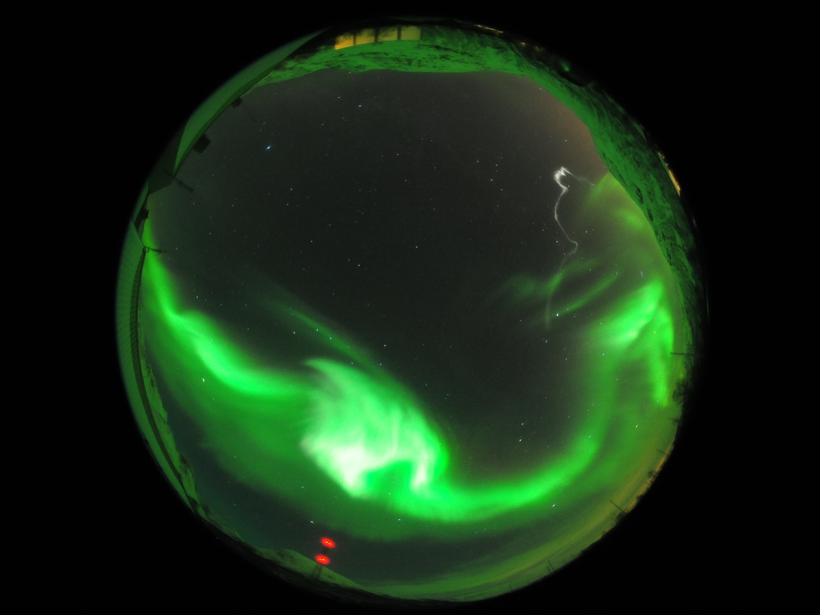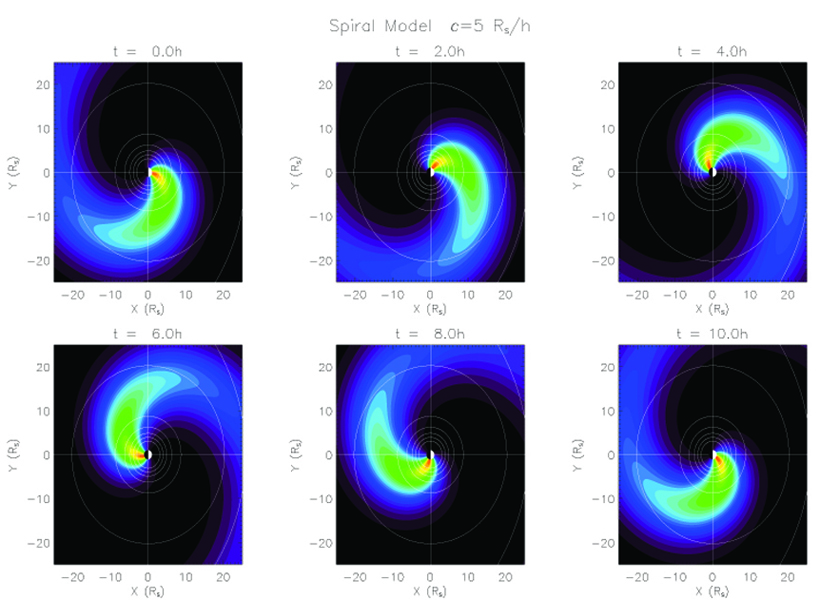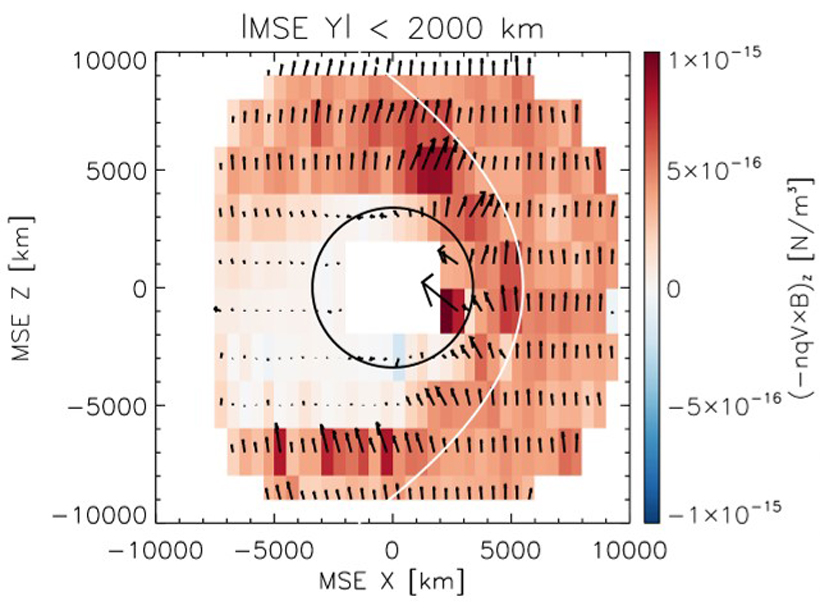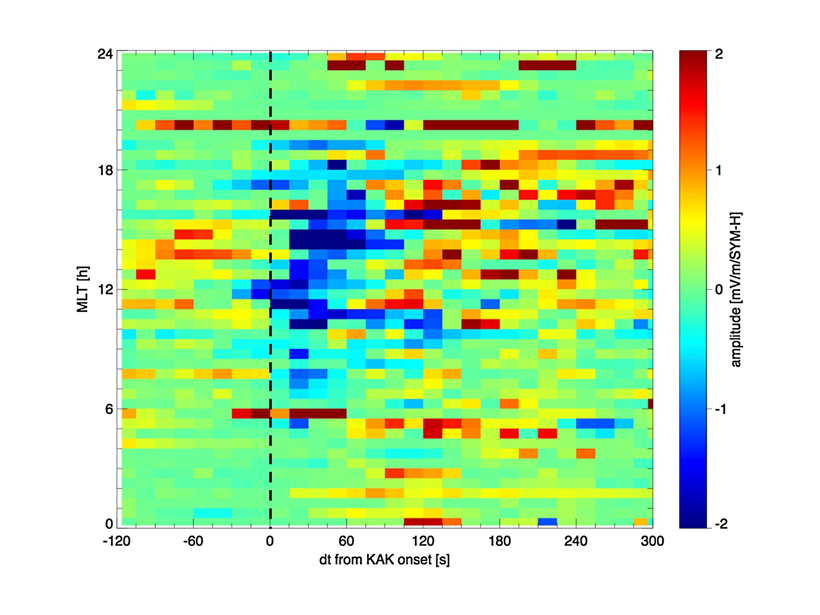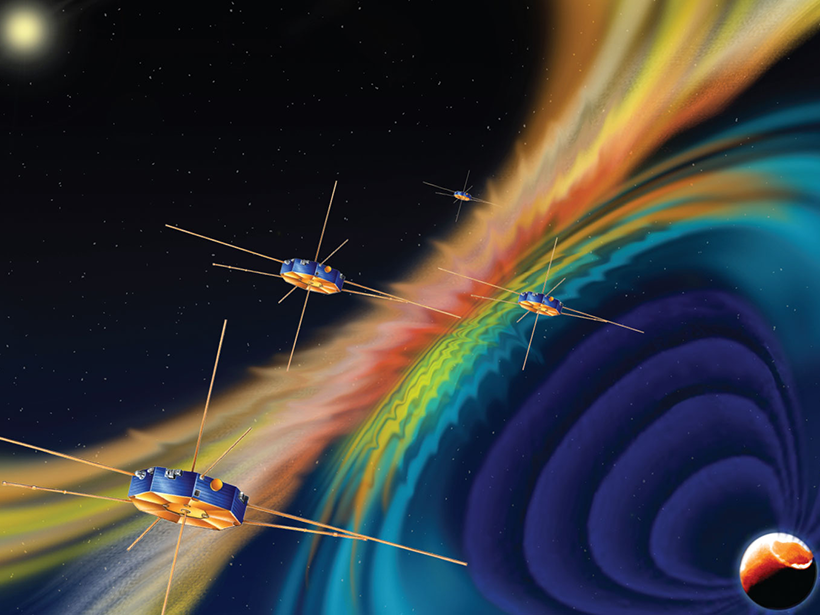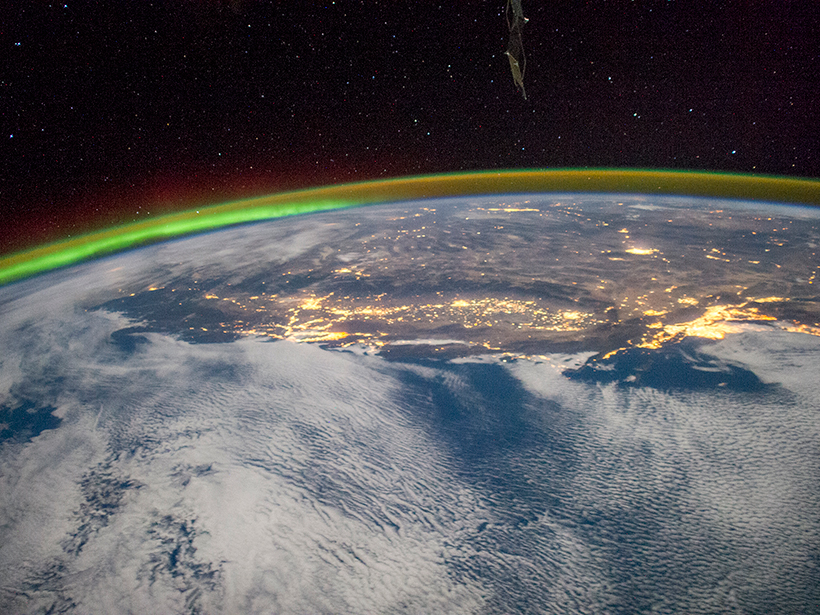Scientists measure how the aurora affects winds in the upper atmosphere.
Journal of Geophysical Research: Space Physics
A Close-in Look at Saturn’s Periodic Space Bubble
When it comes to Saturn’s space environment, summer wins over winter in controlling the periodic flows of electrically charged particles and magnetic fields.
Where the Solar Wind Meets Mars
A comprehensive look at how the solar wind is diverted around Mars, including the relative strength of the three biggest forces at work in this region.
The “Magnetic-less” Magnetotail Boundary
Most boundaries in space are governed by magnetic fields, but not far behind the Earth, where the field change across the magnetopause plays very little role in the pressure balance relationship.
Tracing Electric Currents That Flow Along Earth’s Magnetic Field
A new study uses satellite data to examine a worldwide system of electric currents in greater detail than ever before.
Solar Wind Sets the Magnetosphere Ringing
A combination of data from satellites and ground-based instruments gives new insight into solar wind-magnetosphere-ionosphere interactions.
Jets of Ionospheric Cold Plasma Discovered at the Magnetopause
The lower-energy particles may play a larger role in magnetic reconnection than previously believed, influencing space weather near Earth.
How Earth’s Outer Radiation Belts Lose Their Electrons
A new analysis of three space storms reveals the mechanisms of particle loss from the Van Allen belts.
Is There a Greenhouse Effect in the Ionosphere, Too? Likely Not
Controversial observations of long-term changes in the ionosphere appear to be explained by the Sun’s 11-year cycle of activity, not human greenhouse gas emissions.
Probing the Cusps of Saturn’s Magnetic Field
Data from the Cassini spacecraft show that the cusp regions of Saturn’s magnetic field—where it connects to the Sun’s magnetic field—have similarities to Earth’s and also intriguing differences.

